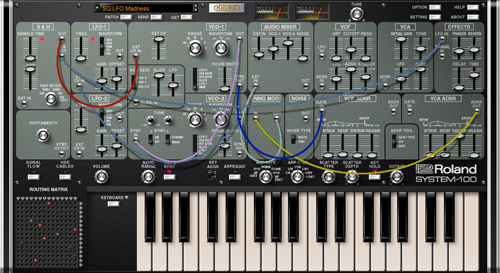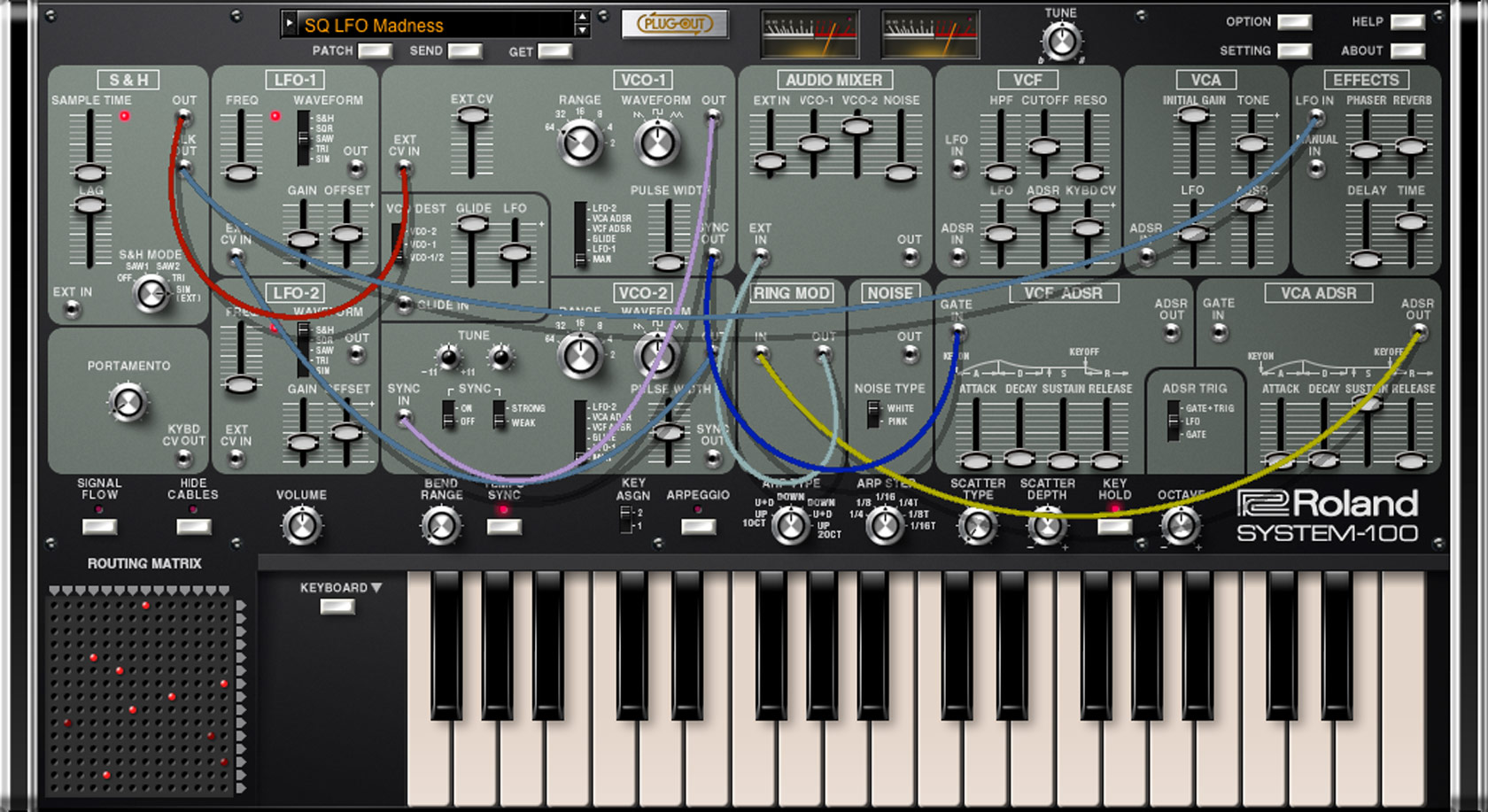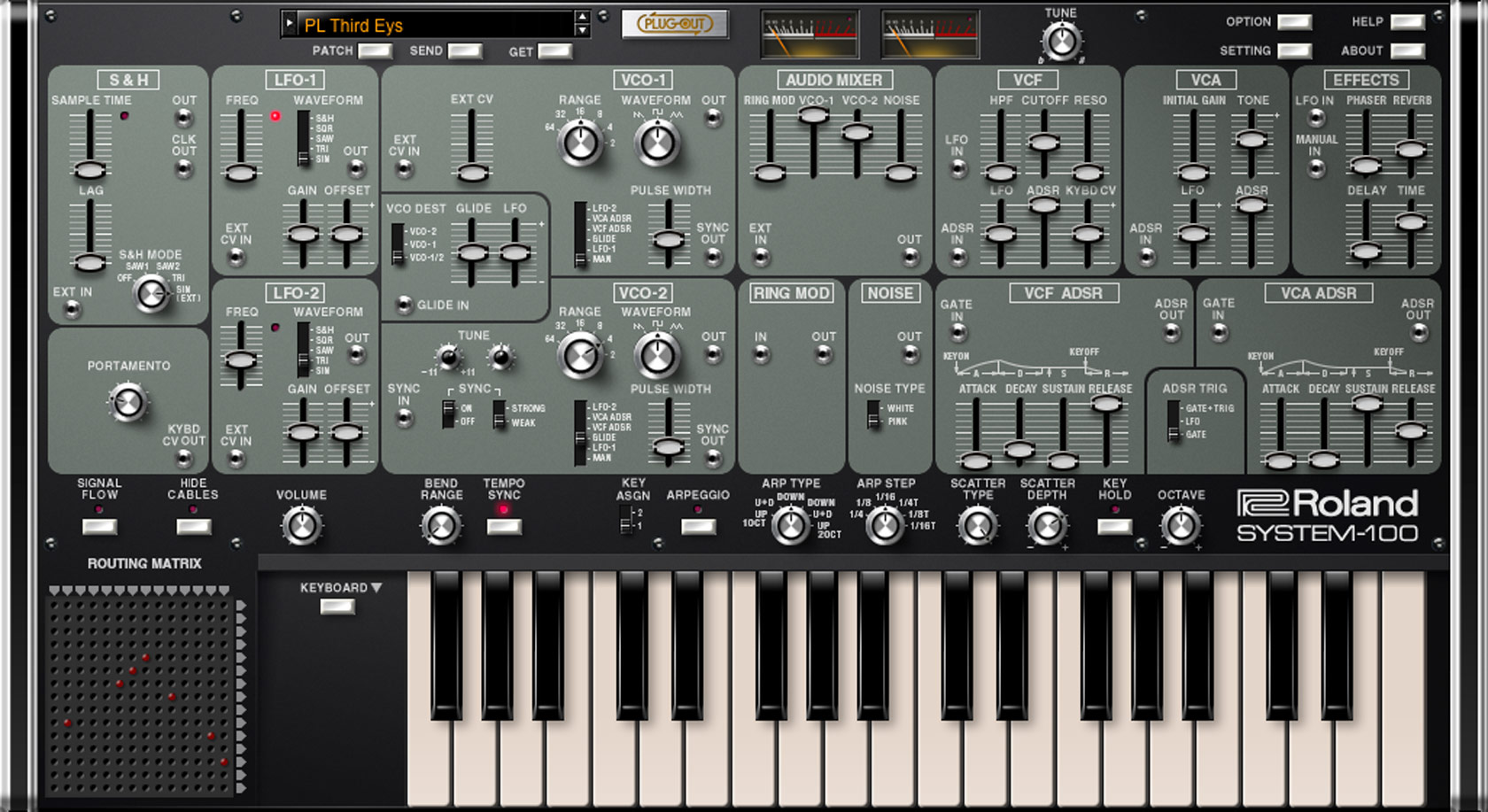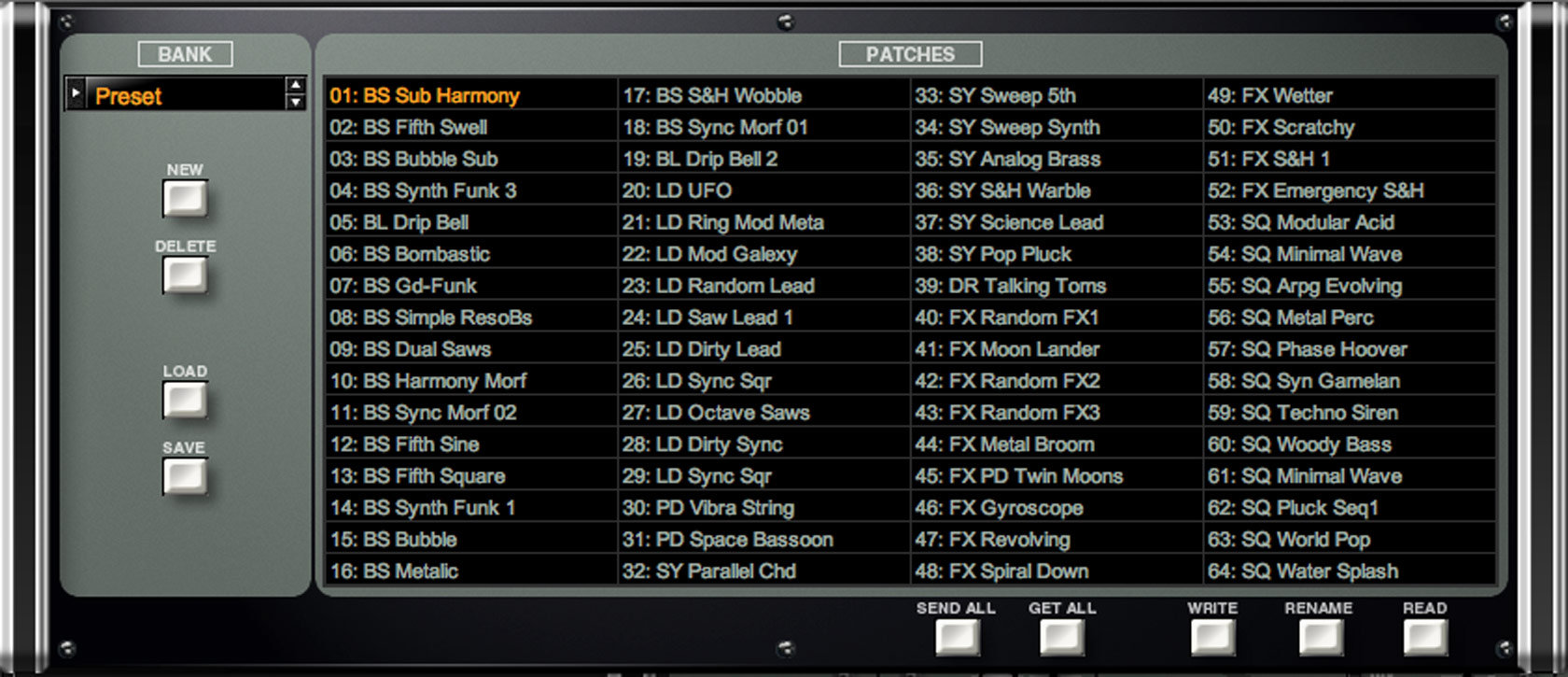- •
- •
- <
- >
Video Library
-
SYSTEM-100 Software Synthesizer plugin
Introducing the Roland SYSTEM-100 Software Synthesizer plugin – a modern reproduction of the now-legendary Roland semi-modular monosynth from 1975.
-
Sounds of the Roland Software Synthesizer Plugins
Now you can add the classic SH-101, SH-2, PROMARS, SYSTEM-100, and new AIRA SYSTEM-1, made by Roland, to your arsenal of software instruments.
Modular Monosynth
Created in 1975, and both distinctive and sought-after to this day, the SYSTEM-100 broke new ground for monosynths. In addition to its ultra-fat oscillators and creamy filters, it had modular patching capabilities, vastly increasing the sound design options. Pairing a Model 101 Synthesizer with a Model 102 Expander gave you two VCOs and two LFOs to work with, as well as Sample and Hold, Ring Modulation and a Noise Generator that all worked seamlessly together. With the addition of its modular routing capabilities, the SYSTEM-100’s sonic palette was staggering - effortlessly turning out the fattest of bases, in-your-face sync leads, dense textures, and exotic soundscapes.
The New SYSTEM-100
With the new SYSTEM-100 PLUG-OUT Synthesizer, the sound of this legendary instrument is perfectly reproduced and brought to life with Analog Circuit Behavior (ACB). ACB faithfully captures the sound and feel of our most revered classics, using original design specs, and a detailed, part-by-part analysis of each analog circuit. While the sound and behavior is reproduced with total accuracy, there are a number of modern additions that improve upon the original design.
The features of the original Model 101 Synthesizer and Model 102 Expander are combined into a single interface, allowing you to use both VCOs, both LFOs, S&H, Ring Mod and so on with no patching. Of course, the signal path can be altered and parameters modulated by connecting cables between the patch points. A new 14x15 Routing Matrix makes for super-quick patching with all connections still visually reflected as patch cables on the SYSTEM-100’s control panel. You can toggle patching on/off as well as quickly see the entire signal flow with convenient buttons right above the Routing Matrix.
Like other PLUG-OUTs there are dual ADSR envelopes (VCF and VCA) and the advanced pattern generation of the Scatter equipped Arpeggiator. Six arpeggio types with six step settings combine with variable Scatter type and depth to create a seemingly infinite selection of patterns. A lush phaser with modulation inputs joins the superb reverb and delay, creating an effects section perfectly suited for synth sounds.
PLUG-IN and PLUG-OUT
While multiple instances of the SYSTEM-100 plug-in can be used in any VST or AU compatible DAW, the SYSTEM-100 PLUG-OUT Software Synthesizer offers seamless integration and unique capabilities for SYSTEM-1 and SYSTEM-1m owners, including knob-per-function hardware control, stand-alone portability, and semi-modular patching capabilities (1m only).
Connect a SYSTEM-1/1m to your computer and it becomes a dedicated controller, only lighting the appropriate knobs and sliders pertinent to the SYSTEM-100. Transfer sounds back and forth between the hardware and software and even use the SYSTEM-1/1m as a high-quality audio and MIDI interface. Or break free entirely and PLUG-OUT directly to the SYSTEM-1/1m, creating a stand-alone hardware SYSTEM-100 synthesizer with real physical controls that can go anywhere and doesn’t require a computer.
With the SYSTEM-1m, you can even use the physical audio and CV/Gate patch points on the hardware with any of the available PLUG-OUT synths. This means semi-modular versions of classic Roland synths are now possible. Pairing the SYSTEM-100 with the SYSTEM-1m gives you dedicated high-resolution controls and both virtual and physical routing and modulation capabilities. The results are simply mind-bending.




